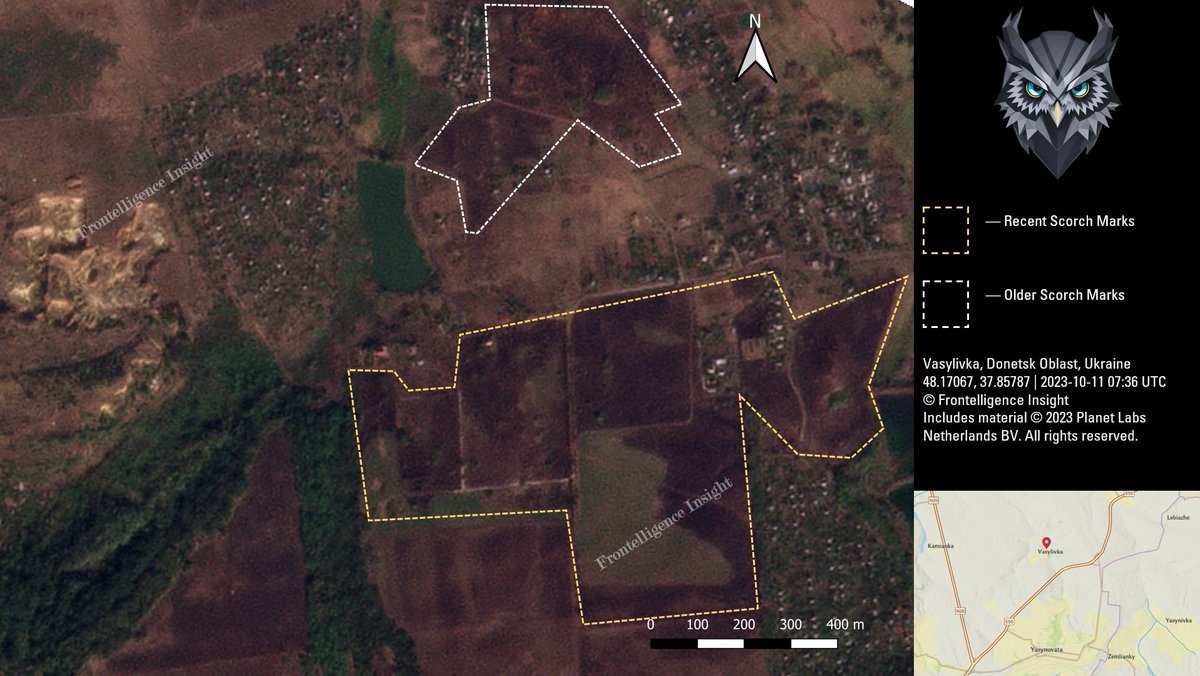In recent days, Avdiivka, an operationally vital settlement near Donetsk, emerged as a frontline hotspot. Our team has prepared this brief follow-up report to offer an overview of recent developments that took place between October 10th and 11th. 🧵Thread: 

2/ On October 10th, Russian forces launched a ground offensive from Krasnohorivka and Vodiane, aiming to encircle Avdiivka. This assault featured an unusual use of armored vehicles, departing from their prior reluctance in large-scale armored attacks. 

3/ The significant number of tanks and APCs highlights the Russian forces' intention for swift and overwhelming offensives on the flank and rear. They used artillery, air support, and their armored units to suppress, overrun, and at times, capture Ukrainian positions. 

4/ Yet, Russian forces' advance decelerated. Despite reaching the northeast of Stepove, a rear area of Avdiivka, they faced minefields, anti-tank resistance, and artillery fire, resulting in significant losses and hindering their ability to exploit their initial success. 

5/ Our most conservative estimate suggests that the Russian side suffered a minimum of 36 vehicle losses, which include abandoned, damaged, or destroyed vehicles. These losses predominantly consist of APCs, tanks of various configurations, and transportation vehicles.
6/ It is premature to say whether Russian forces will achieve substantial advances in the upcoming days, given the challenging situation for both sides. However, it is already clear that the assault has proven to be highly costly for the attackers 

7/ We conclude that our prior concerns about the Russian reserves were justified, as they were able to allocate resources for this operation, despite their concurrent operations in Kupiansk and in the South. However, their offensive capabilities appear to be still limited.
8/ This update was compiled using a blend of satellite imagery and OSINT sources.
Geolocation: @EjShahid @blinzka @GeoConfirmed @AndrewPerpetua @Deepstate_UA
Photos and videos: @NOELreports @bayraktar_1love
The video links are provided in the image descriptions.
Geolocation: @EjShahid @blinzka @GeoConfirmed @AndrewPerpetua @Deepstate_UA
Photos and videos: @NOELreports @bayraktar_1love
The video links are provided in the image descriptions.
9/ I kindly ask you to like and share the initial message in this thread. The 'Frontelligence Insight' project will release a significant update next week, so don't forget to follow. These materials and imagery are available thanks to the support received through Buy Me A Coffee
• • •
Missing some Tweet in this thread? You can try to
force a refresh









